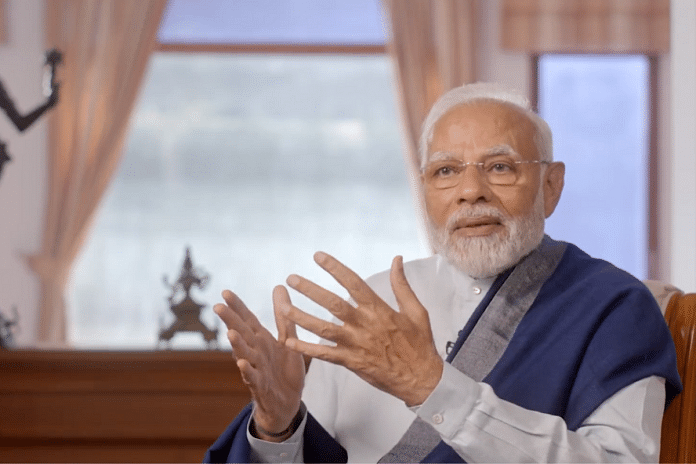New Delhi: Public broadcaster Doordarshan Friday aired the first of a two-part documentary showcasing Prime Minister Narendra Modi’s vision of a “new India”, characterised by the revival of old temples like Somnath, Kedarnath and Kashi Vishwanath with an aim to restore the “glory of India’s heritage and civilisation”.
Titled ‘Dharohar Bharat Ki – Punarutthaan Ki Kahaani’, the documentary, the second part of which will be aired Saturday, is a joint initiative of India’s public service broadcaster Prasar Bharati and the Ministry of Culture. The series is narrated by Kamiya Jani, a social media influencer and founder of ‘Curly Tales’ — a food and travel recommendation content platform. Jani also interviewed Rahul Gandhi during the Bharat Jodo Yatra in January.
The 30-minute documentary (first part) begins with a mythic historical timeline of ‘Satya Yuga’ during which it suggests Shiva’s anger led to the construction of Gujarat’s Somnath temple. The temple is shown to have withstood “17 attempts” at destruction in the 11th century at the hands of Mahmud of Ghazni, but had “its spirits reawakened when PM Modi gave it a ‘grand avatar’ and turned it into a ‘world-class’ infrastructural project in 2021″.
The Prime Minister, who was featured in the documentary, says it was made to tell young Indians about the country’s past. “Today (due to all these efforts) there is this advantage that the new generation is able to view our ancient traditions in a different light,” he said.
The documentary also featured some testimonials of the general public visiting these temples restored as a result of the government’s efforts, including Ujjain’s Mahakal temple.
It further talks about the Mahakali temple (Pavagadh shrine) in Gujarat and how the unfurling of a traditional flag from its ‘shikhara’ or spire — that was ‘broken by Muslim emperor Mahmud Begada in the 15th century’ — was made possible for the first time in 2022 by PM Modi.
Also Read: Modi govt’s proposed geoheritage bill protects sites capturing Earth’s history. What it means
Temples to World Heritage tag
Moving from Dvapara to Treta Yuga, Jani gives similar instances of PM Modi’s vision and efforts to “completely transform” Varanasi’s Kashi Vishwanath temple and Ayodhya’s Ram temple.
The first episode talks about how, in 2013 after the floods in Uttarakhand, the demand to restore the Kedarnath temple was denied, but when Narendra Modi became the PM, he made it possible as “he has an old connection with the hills”.
With a sudden jump to Indus Valley Civilisation, the documentary talked about the Dholavira site, which the episode highlights was made famous by the PM globally by preserving it and turning it into a tourist spot that retold India’s “glorious past” and became the reason why it got UNESCO’s world heritage tag in 2021.
Kartarpur Corridor also features in the documentary. Talking about the corridor that links Gurdwara Darbar Sahib in Pakistan’s Kartarpur, the episode highlights that it was PM Modi who fulfilled the desire of many Sikhs in India who had been wanting to visit the shrine since Independence.
The episode ended with a section on the “Purana Qila” during which Modi is given credit for bringing back 229 artefacts, which were illegally smuggled out of the country by foreign powers and are currently on display at the monument.
(Edited by Richa Mishra)
Also Read: Window to the states’ — India’s culture council signs MoU with 23 states for ‘cultural diplomacy’



